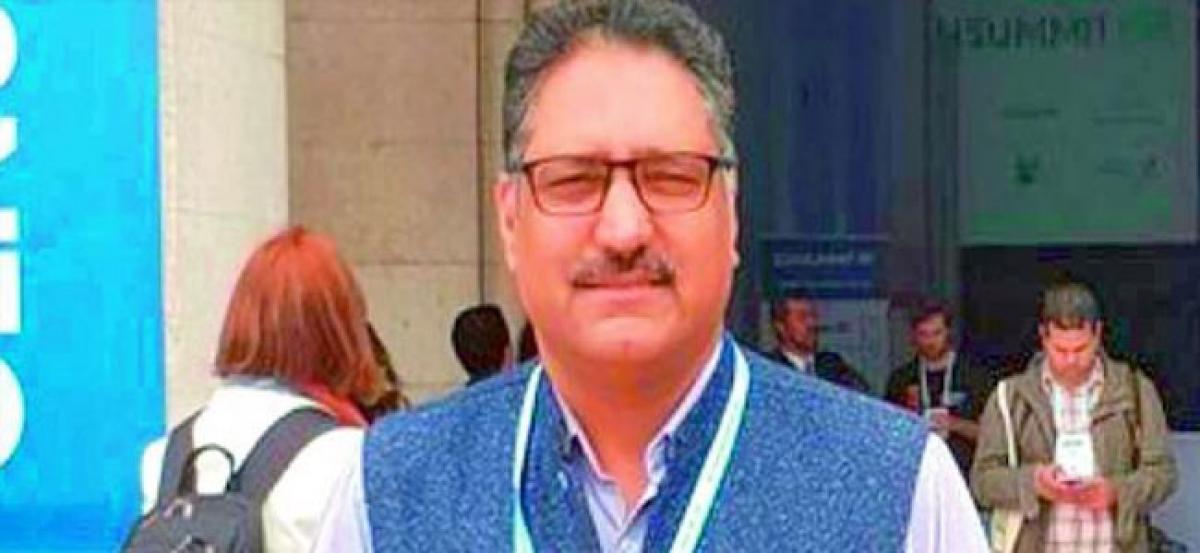Live
- Lok Sabha extends tenure of JPC on Waqf Bill until 2025 Budget Session
- 24 Must-Watch Movies & Web Series This Week: From Thrilling Crime Dramas to Mythological Adventures
- International Seminar held on AI, Educational Communication at EFLU
- Speaker advises ruling and opposition in state assembly
- AAP govt must table 12 CAG reports in Delhi Assembly: BJP
- Raashii Khanna responds to PM Modi's praise for ‘The Sabarmati Report’
- HPZ Token scam: ED attaches Rs 106-cr assets of Chinese entities in India, Dubai
- Telangana: Revanth Reddy Demands Action on Mid-Day Meals Amid Food Poisoning Concerns
- Sensex slumps 1,190 pts, Nifty closes below 24,000
- Delhi sees 1st Japanese Encephalitis case in 13 years: Know all about viral brain infection
Just In

Indians long ago had refined the last clause of the old English joke that the three fastest ways of communicating are “telephone, telegram and tell-a-woman” to “tell anyone, man or woman”. The 1857 upsurge was instigated by word of mouth and the mysteriously circulating chapati. Indians have learnt the Emergency of Turkman Gate demolitions and coerced nasbandi without a single word regarding this
Indians long ago had refined the last clause of the old English joke that the three fastest ways of communicating are “telephone, telegram and tell-a-woman” to “tell anyone, man or woman”. The 1857 upsurge was instigated by word of mouth and the mysteriously circulating chapati. Indians have learnt the Emergency of Turkman Gate demolitions and coerced nasbandi without a single word regarding this matter in print.
Videos and text messages were the source of warnings for the attacks that accounted for the panic-stricken exodus in 2012 of Northeastern students and workers from Bengaluru, Mumbai, Pune and elsewhere. The circulation on WhatsApp the following year of an old “lynching”in Pakistan fanned the flames of communal violence in Muzaffarnagar, in which at least 62 people (mainly Muslims) were killed and more than 50,000 were displaced. Technology and social network/cyber world played a major part in instigating the three-day Gujarat pogrom of 2002.
Nowadays, the Internet and cellphones accelerate rumours. Millions of people who are mentally still in the Middle Ages share Facebook postings. There’s the mobile where no other form of social media is available. As Martin Kampchen, a Santiniketan-based German scholar once wrote in Kolkata’s Telegraph, “the mobile is the fulfilment of a primeval Indian desire of ‘being connected’ any time — with one’s family, community and neighbourhood, one’s friends and also with nature and the divine… Never to be alone”.
People learn and gain a lot through these insidious, ubiquitous but anonymous channels that are the gift of modern technology that someone somewhere has killed or stolen a cow. They hear that someone knows someone who has heard that children have been kidnapped from a nearby village and either been circumcised and converted or sold into prostitution or slavery. Both fears loom large in the national subconscious; both speak of the atavistic horrors that haunted our pre-urban — pre British existence.
Seven villagers were beaten to death in Jharkhand last year on suspicion of child-lifting. Two innocent young men, Nilotpal Das and Abhijeet Nath, were battered to death on June 8 in Assam’s Karbi Anglong district. There are reports, too, of friction with the police over illegal stone quarrying. Ancient ethnic conflict between Ahomiyas and Karbis, the latter’s dormant but not dead statehood demand, Assamese neuroses about outsiders and “infiltrators”, the divide between the rich and the poor, and the long dreadlocks that one of the victims sported, may all have contributed to their being singled out as the other. For whatever reason, the police always has been far away and slow to arrive.
There’s another category of crime that is more directly connected to folk faith. Twenty-six-year-old Parashuram Waghmore from Pune, who is accused of shooting Gauri Lankesh, the determinedly secular editor of Gauri Lankesh Patrike magazine, on September 5, 2017 reportedly confessed to the police that he knew nothing about his victim except that she was the enemy of his religion which he wanted to save. The sensational killings of rationalists like Narendra Bhabholkar, Govind Pansare and M.M. Kalaburgi, are all well-known in the leftist intellectual circles, and attributed to the same fundamentalist network that is said to have been indoctrinated and used Waghmore.
The angry mob that lynched two Muslim men suspected of stealing cattle in Jharkhand Godda district last week may have drawn encouragement from two factors. First, legal exaltation of the sanctity of cattle like the Gujarat law that punishes cow slaughter with 14 years in jail. Second, police indifference and the law’s delays create the impression that no matter what Mr Modi might say, gau rakshaks enjoy official protection.
There should be many more if India has to get rid of this shameful label of “Lynchistan.”

© 2024 Hyderabad Media House Limited/The Hans India. All rights reserved. Powered by hocalwire.com







